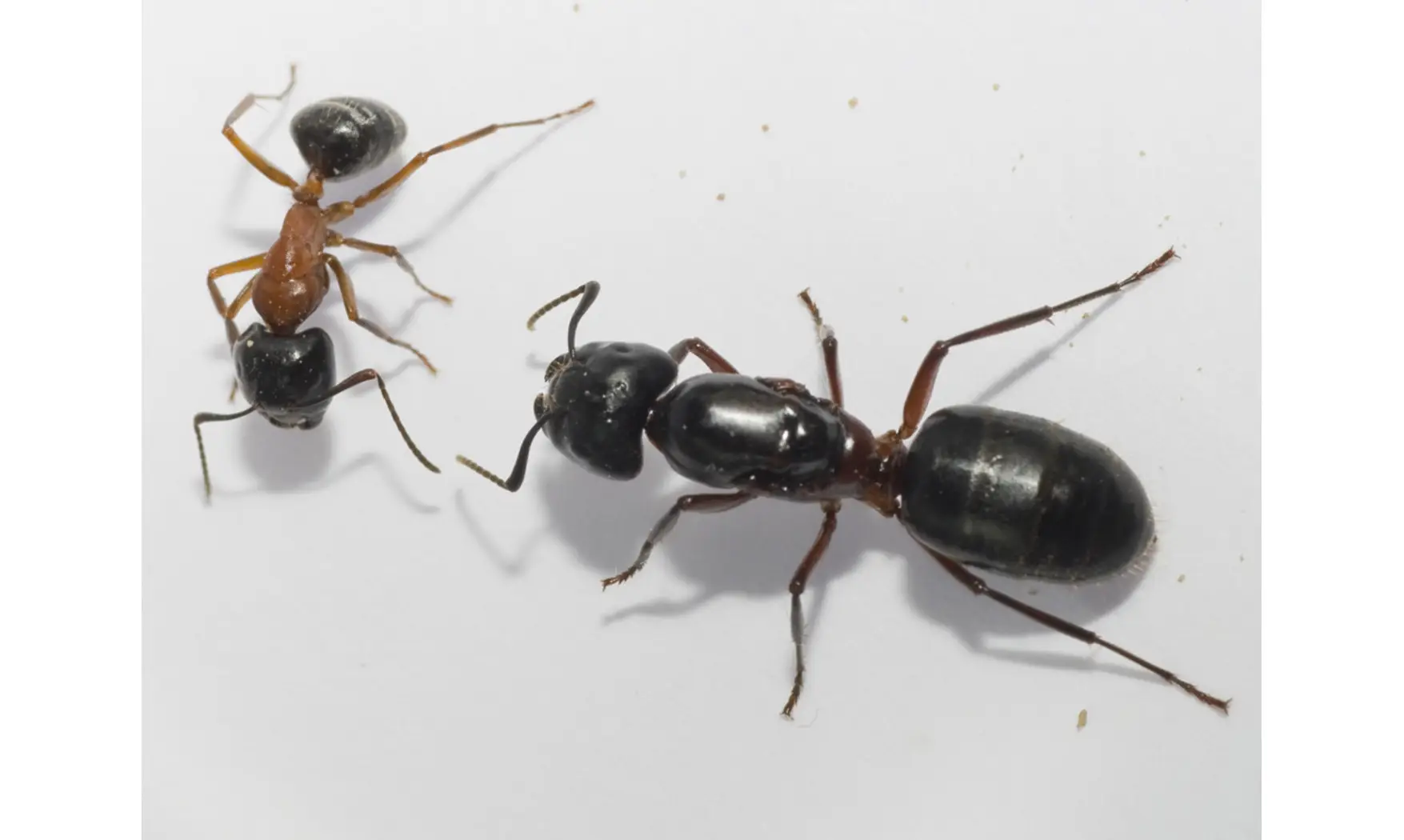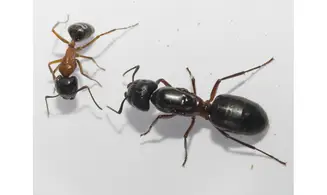

Camponotus herculeanus
Reference : CFOUR-037
19.90€
Unavailable
0 in stock
Latin name: Camponotus herculeanus
Taxonomy: Subfamily: Formicinae, Tribe: Camponotini
Breeding level: Beginner
Geographic distribution: Central Europe mainly above 300 m.
Habitat: Prefers coniferous and mixed softwood forests with high spruce content, as well as dry and semi-arid grasslands with some shrubs.
Colony form: Monogyne
Queen: Size: 16 - 17mm Color: Bright black dark brown
Worker: Size: 7 - 10mm Color: Bright black dark brown
Major: Size 14 - 16mm Color: Glossy dark brown black
Male: Size: 10mm Color: Black
Food: Honeydew and insects: like flies, mealworms, mosquitoes and small crickets; also fruits
Humidity: Hunting area: 30 - 50% Nest: 50 - 60%
Temperature: Hunting area: 18 - 28 ° C Nest: 21-25 ° C
Hibernation: Yes compulsory from November to the end of March between 7-12 ° C
Nest type: Plexiglas nest, nest with tubes, reconstituted stone nest.
Description: Camponotus herculeanus belong to the largest ants in Europe, they are very little active.
Development: Swarming from mid-May to the end of June.
Foundation: Set in a cloister (without food) Development: 50 days from egg to worker (depending on temperature)
Size of the colony: 10,000 individuals, the queen can reach the age of 15 years.
Taxonomy: Subfamily: Formicinae, Tribe: Camponotini
Breeding level: Beginner
Geographic distribution: Central Europe mainly above 300 m.
Habitat: Prefers coniferous and mixed softwood forests with high spruce content, as well as dry and semi-arid grasslands with some shrubs.
Colony form: Monogyne
Queen: Size: 16 - 17mm Color: Bright black dark brown
Worker: Size: 7 - 10mm Color: Bright black dark brown
Major: Size 14 - 16mm Color: Glossy dark brown black
Male: Size: 10mm Color: Black
Food: Honeydew and insects: like flies, mealworms, mosquitoes and small crickets; also fruits
Humidity: Hunting area: 30 - 50% Nest: 50 - 60%
Temperature: Hunting area: 18 - 28 ° C Nest: 21-25 ° C
Hibernation: Yes compulsory from November to the end of March between 7-12 ° C
Nest type: Plexiglas nest, nest with tubes, reconstituted stone nest.
Description: Camponotus herculeanus belong to the largest ants in Europe, they are very little active.
Development: Swarming from mid-May to the end of June.
Foundation: Set in a cloister (without food) Development: 50 days from egg to worker (depending on temperature)
Size of the colony: 10,000 individuals, the queen can reach the age of 15 years.

